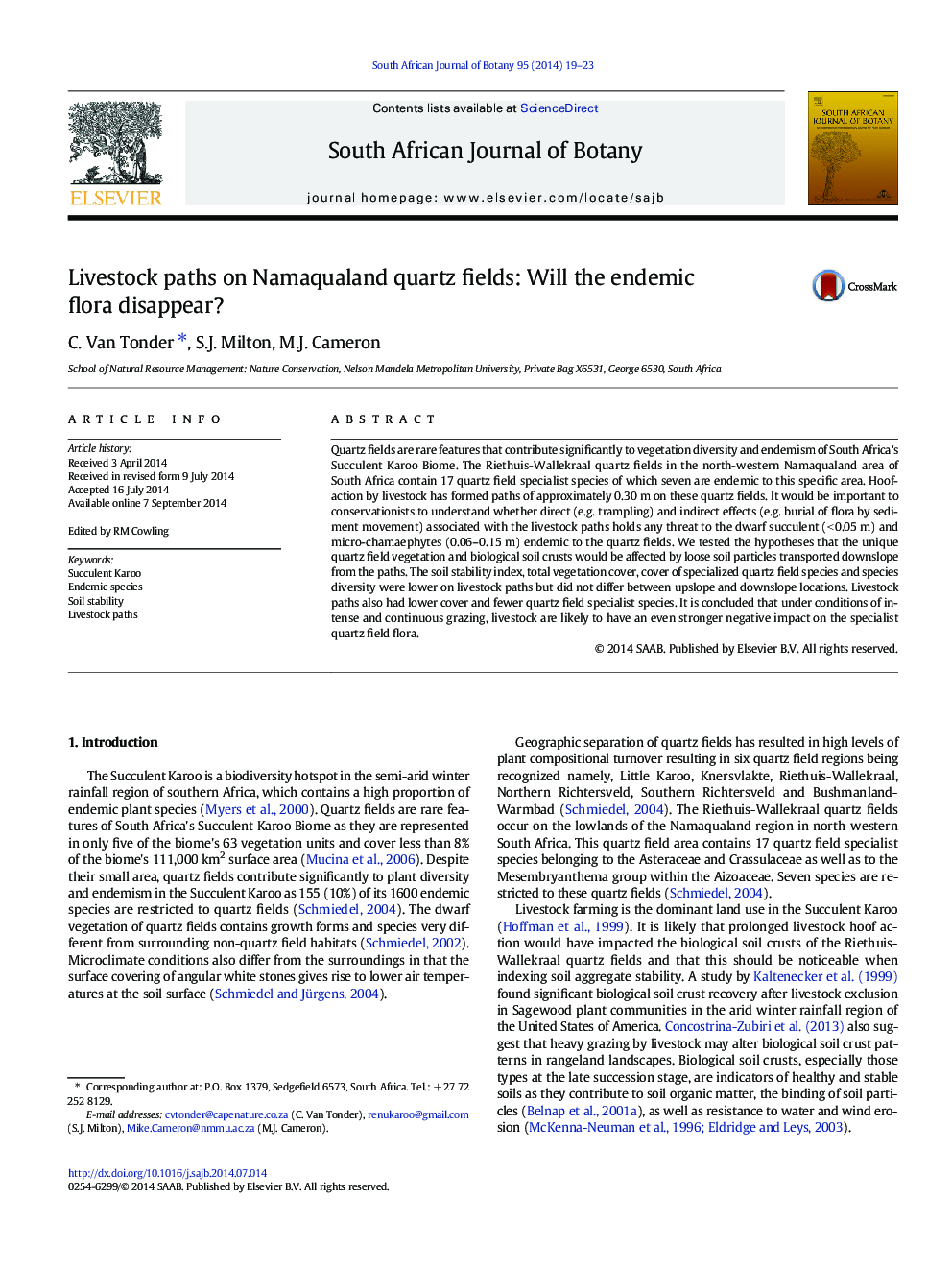| Article ID | Journal | Published Year | Pages | File Type |
|---|---|---|---|---|
| 4520632 | South African Journal of Botany | 2014 | 5 Pages |
•Livestock paths on Namaqualand quartz field vegetation had low soil stability.•Stable soils on quartz fields supported vegetation with greater diversity.•Endemic dwarf succulents were affected by livestock paths.
Quartz fields are rare features that contribute significantly to vegetation diversity and endemism of South Africa's Succulent Karoo Biome. The Riethuis-Wallekraal quartz fields in the north-western Namaqualand area of South Africa contain 17 quartz field specialist species of which seven are endemic to this specific area. Hoof-action by livestock has formed paths of approximately 0.30 m on these quartz fields. It would be important to conservationists to understand whether direct (e.g. trampling) and indirect effects (e.g. burial of flora by sediment movement) associated with the livestock paths holds any threat to the dwarf succulent (< 0.05 m) and micro-chamaephytes (0.06–0.15 m) endemic to the quartz fields. We tested the hypotheses that the unique quartz field vegetation and biological soil crusts would be affected by loose soil particles transported downslope from the paths. The soil stability index, total vegetation cover, cover of specialized quartz field species and species diversity were lower on livestock paths but did not differ between upslope and downslope locations. Livestock paths also had lower cover and fewer quartz field specialist species. It is concluded that under conditions of intense and continuous grazing, livestock are likely to have an even stronger negative impact on the specialist quartz field flora.
